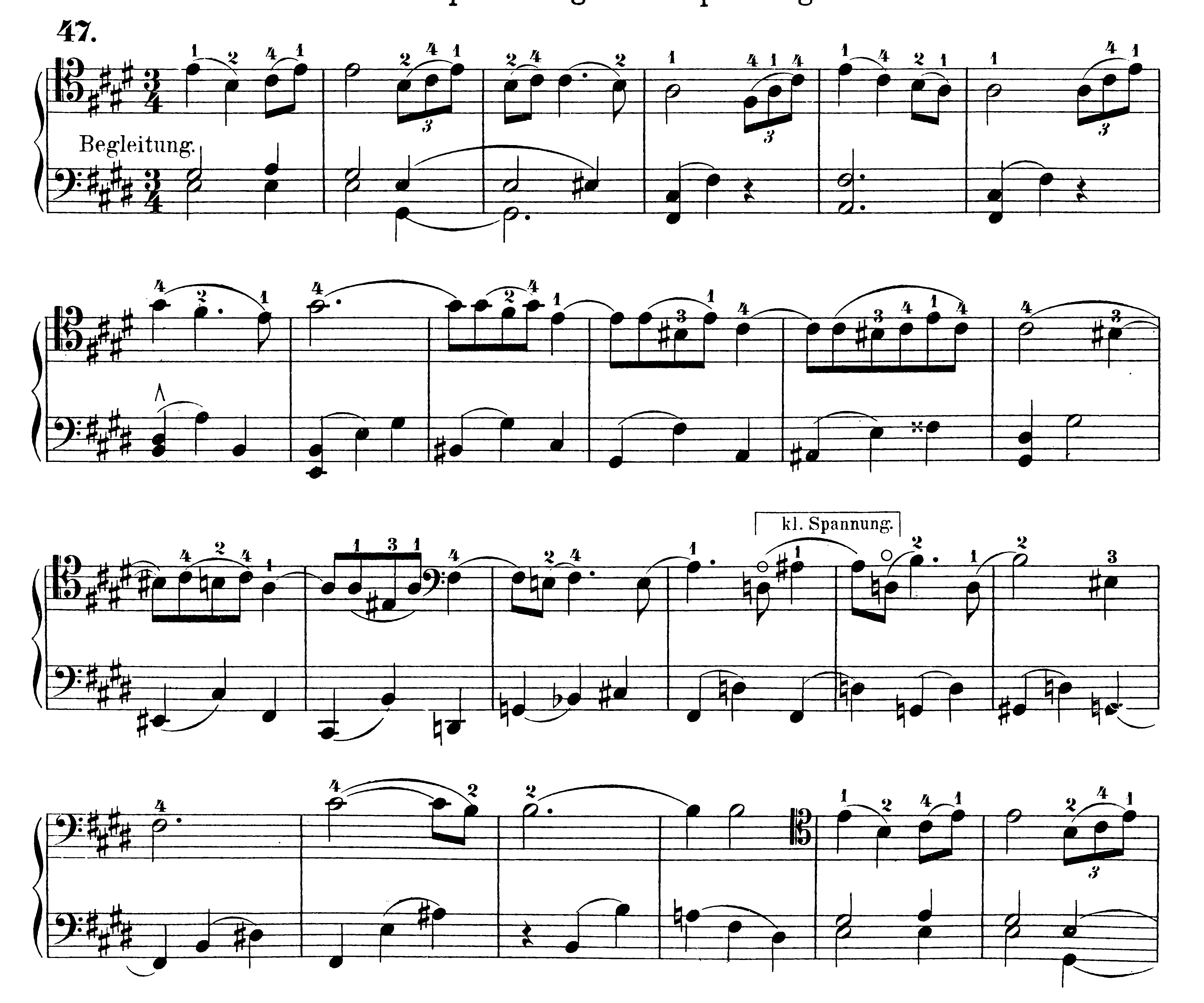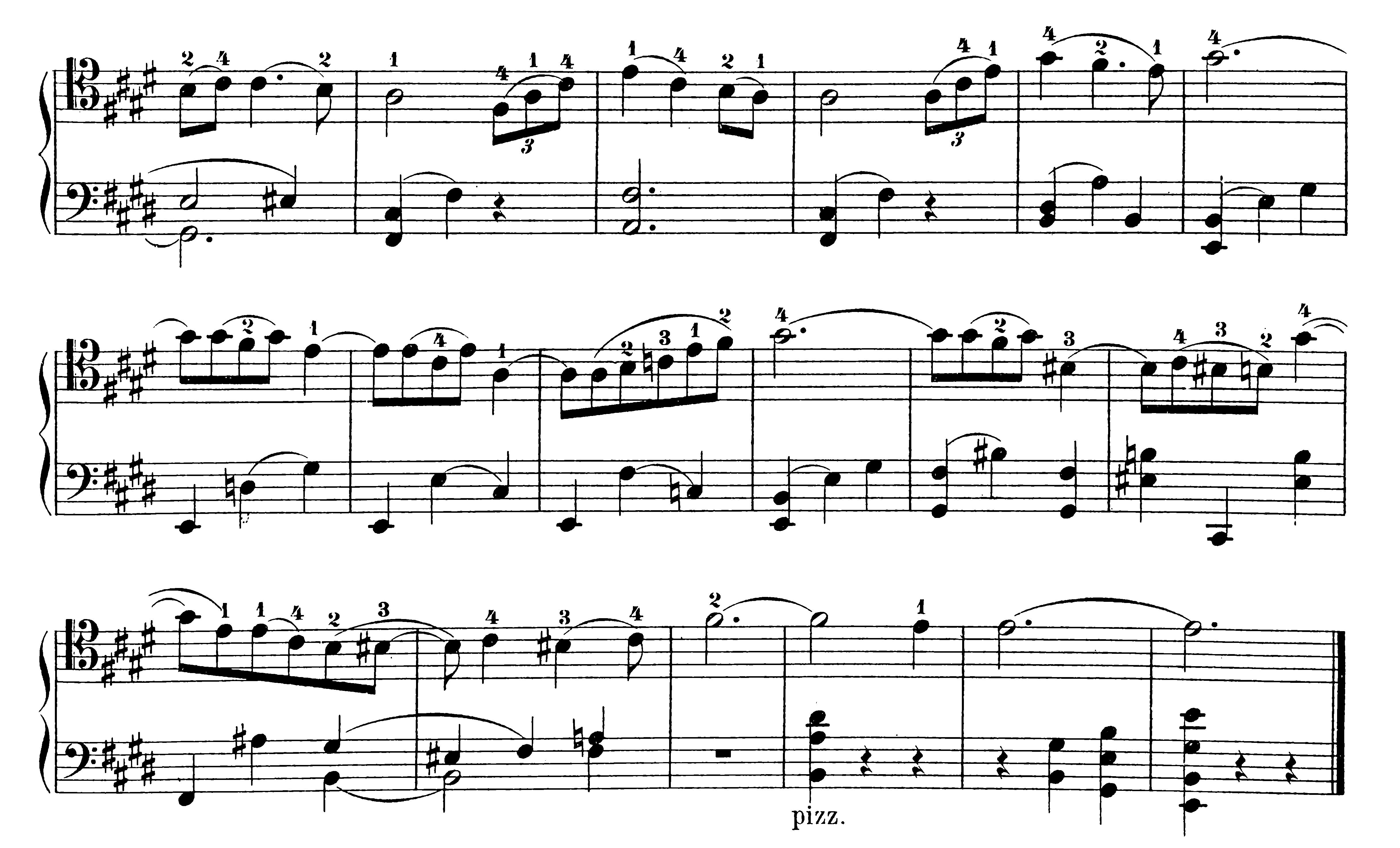4 ½ Position
The 4 ½ position using a closed hand position is as follows:
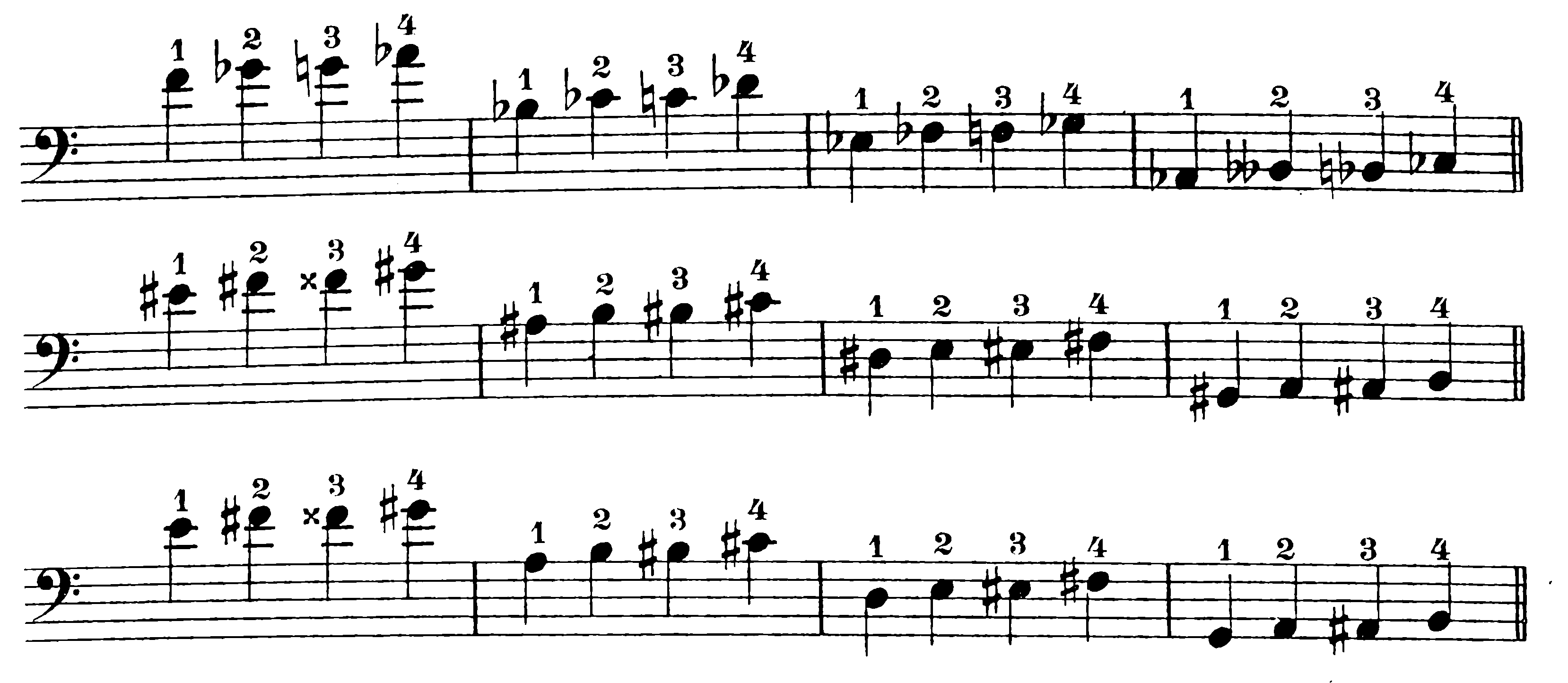
[“oder enharmonisch” = “enharmonically respelled”] [“mit grosser Spannung” = “with extensions”]
This position deviates from the previous positions discussed, because the thumb (as mentioned in Article I of this section) cannot move with the first finger. Consequently, it cannot oppose the first and second fingers.
In spite of this, the position is listed here partly because it is similar to the other positions mentioned. The fourth finger is still used (this finger must not play a note higher than G-sharp or A-flat without the use of the thumb). Furthermore, the extension here can be made comfortably by stretching the second finger up from fourth position.
To illustrate this, recall (as was stated in an article in the previous section on extensions) that the stretch between the first and second fingers can easily span a whole step. This extension can be done in two ways: either by moving the first finger back, as previously discussed, or by moving the second finger up.
(in first position)

(in first position)

Of these two cases, the first kind of extension is decidedly the easier. The difference is that in the first case, the thumb is closer to the second finger; in the second case, it is closer to the first finger. In lower position (half, first, second, etc.), the distance between the fingers is relatively large enough that the stretch, as in B), is uncomfortable for an average-sized hand and almost impossible for a small one. This is why it is appropriate to transfer the extension, as in (B), to the higher position, where the thumb (being half a tone higher) comes closer to the second finger and makes the stretch easier.
(In some schools of cello playing, the following fingering
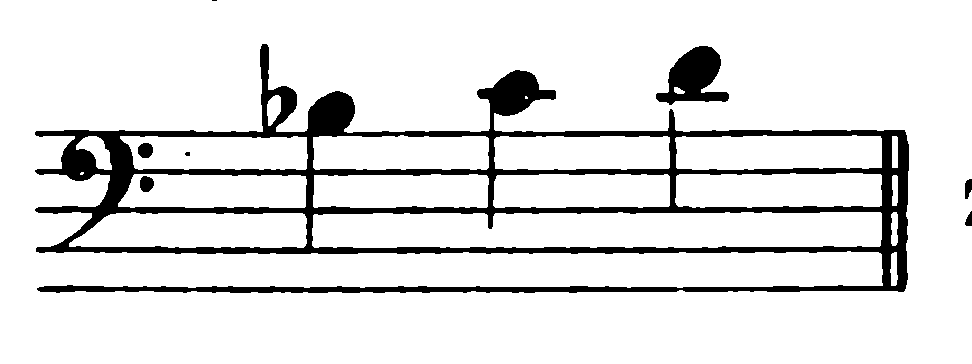 counts as half position. A similar fingering:
counts as half position. A similar fingering:
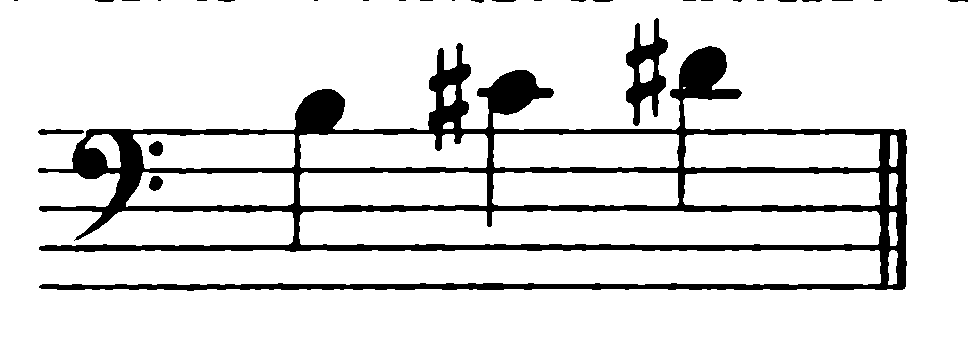 counts as first position, etc.)
counts as first position, etc.)
In fourth position, however, the distances between the fingers are so much smaller that an extension such as that in B), with the thumb closer to the first finger, can be grasped with ease, and is obtained in fourth position by moving the second finger up, using this fingering:

The fingerings in examples 5-8 are the same as those set forth above for extensions in 4 ½ position. In this way, we could regard 4 ½ position as part of fourth position, so its place in this section is justified.
Exercises in Closed Hand Position
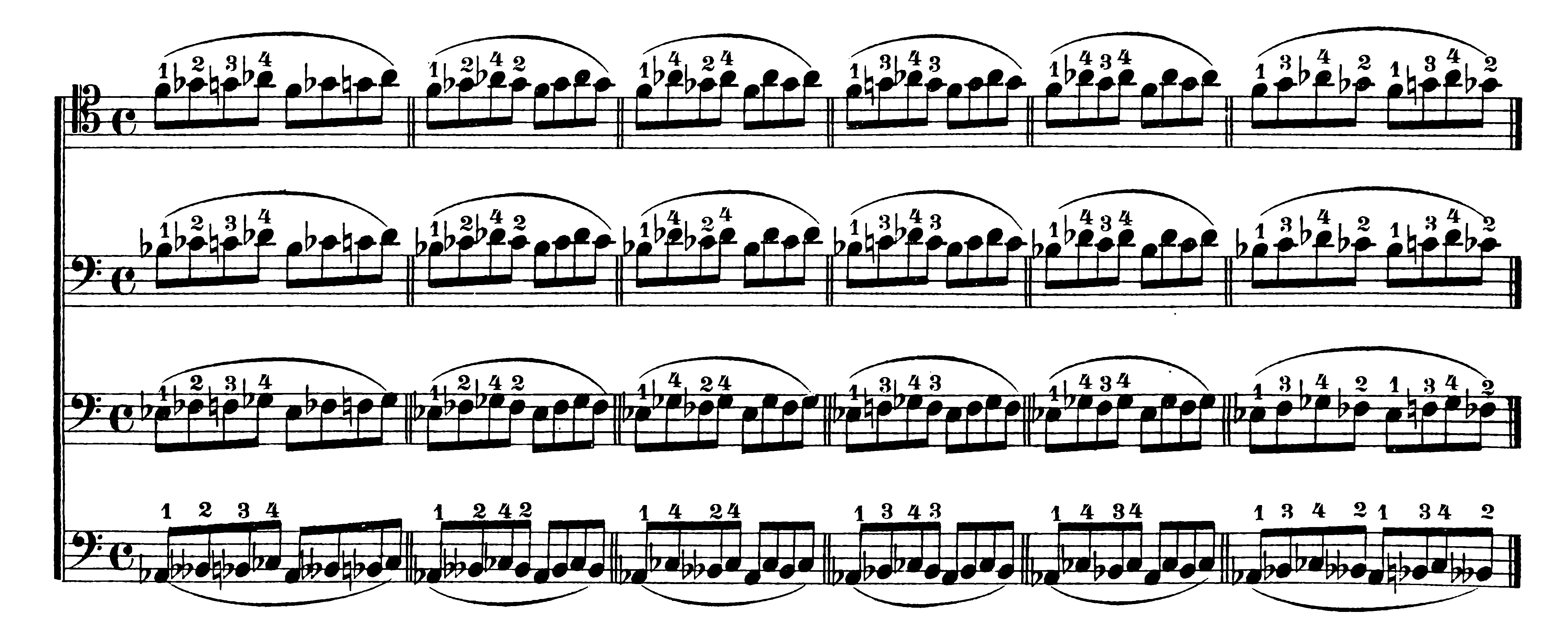
Example in Closed Hand Position
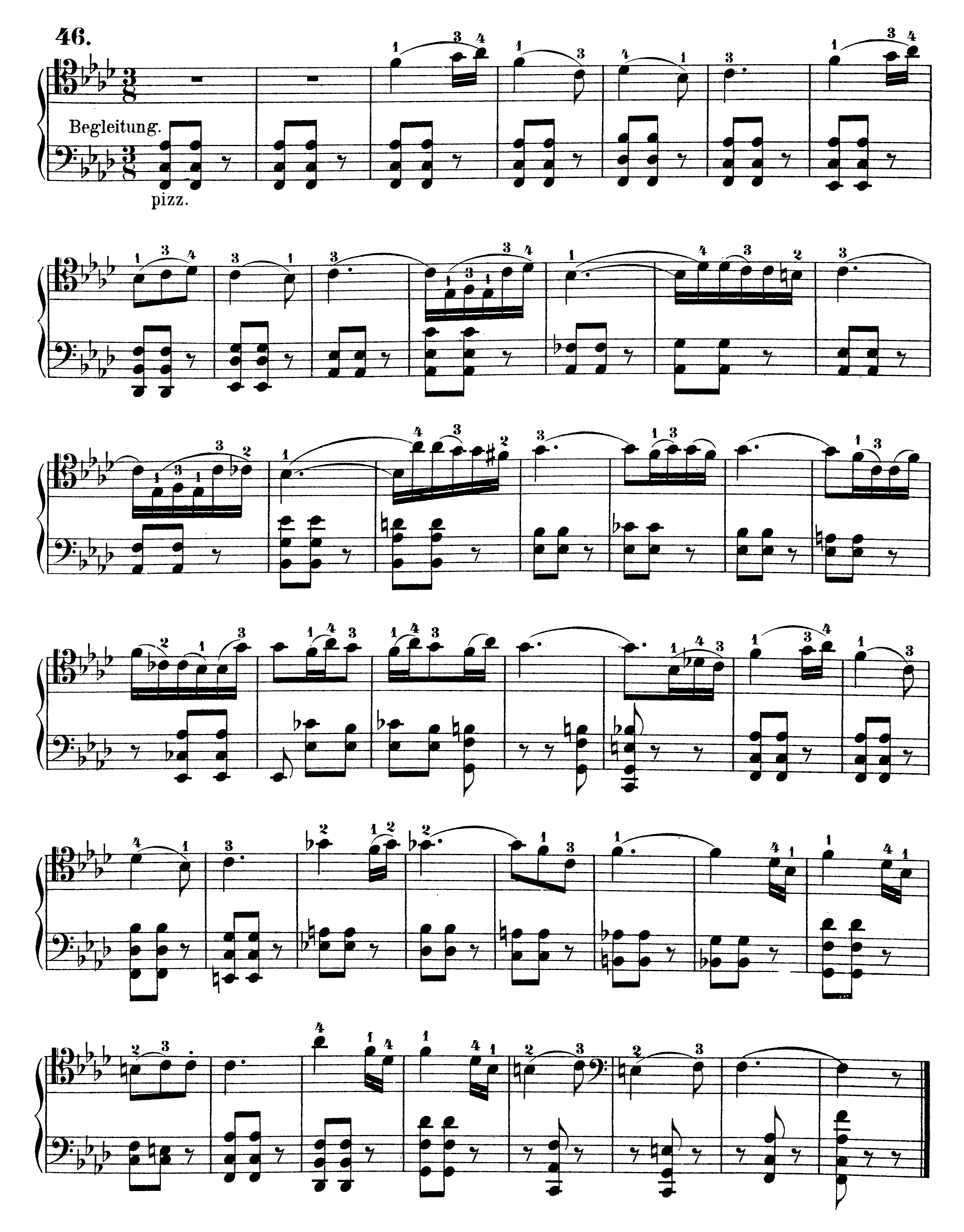
Exercises with Extensions
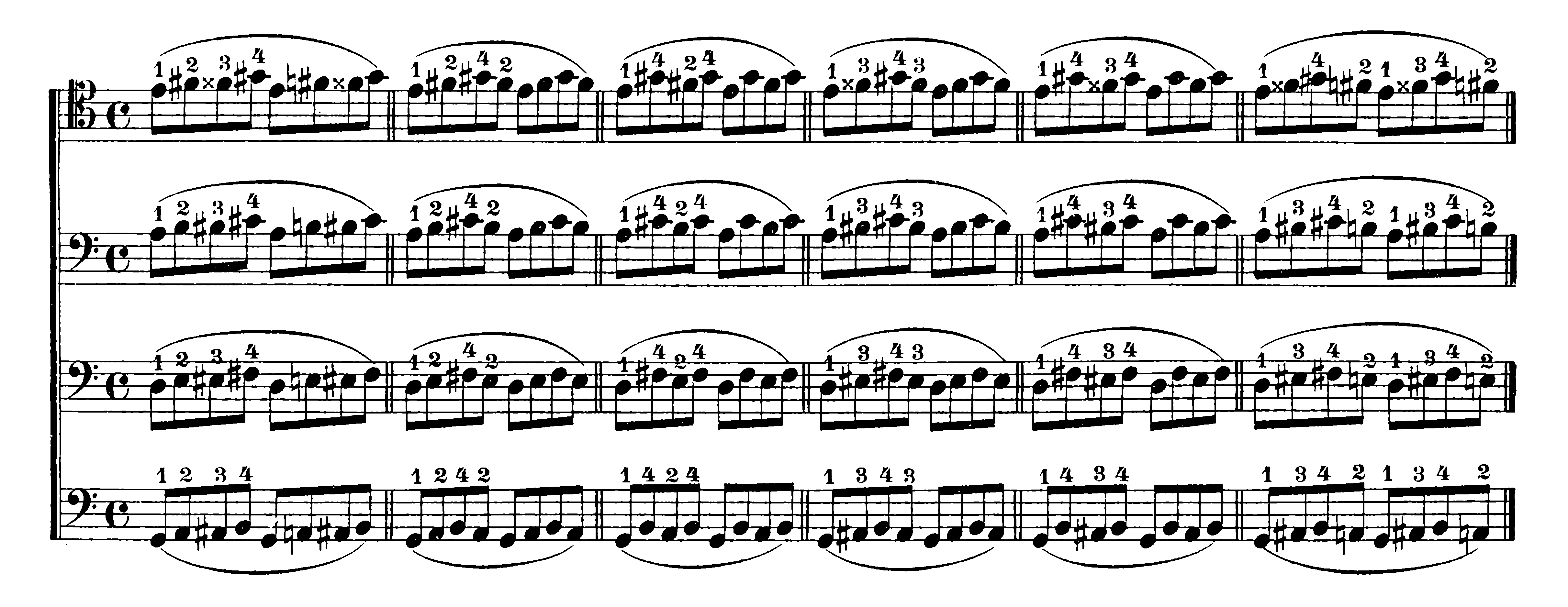
Example with Extensions
